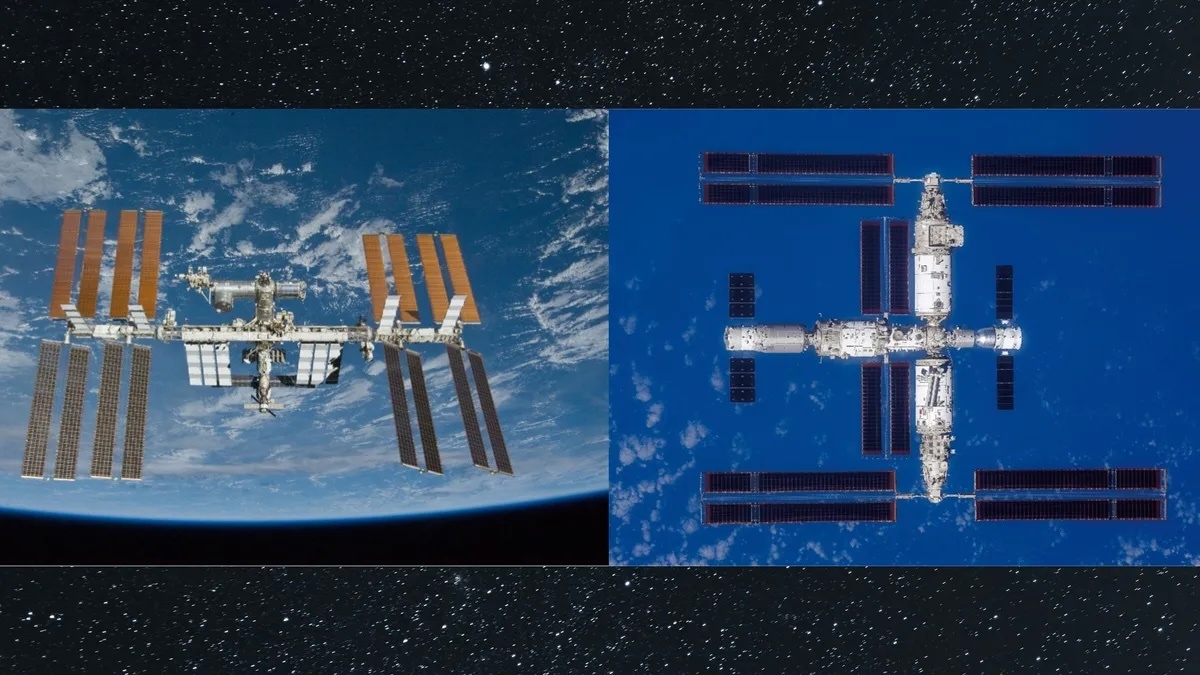4.05.2025
From July 3 through July 8, it will be possible to sight the two largest objects currently in orbit around the Earth, passing across the predawn sky within minutes of each other.

The International Space Station (left) and the Tiangong space station (right) will both be visible for much of North America this week. (Image credit: NASA/CNSA/Jose A. Bernat Bacete/Getty Images)
During this upcoming week, skywatchers across most of the U.S. and southern Canada will get an opportunity to view the two largest space vehicles now in orbit around the Earth within minutes of each other.
They are the International Space Station (ISS) and China's space station, Tiangong. If you are up during the predawn hours, you'll probably be able to make a sighting of both within less than a half hour of each other.
And on the morning of July 5, it may be possible to see both in the sky at the same time.
Night lights
If you go out and carefully study the sky near dusk or dawn, the odds are that you should not have to wait more than a few minutes before you see one of the more than 30,700 satellites now in orbit around Earth.
Most of these are just "space junk" ranging in size from as large as 30 feet (9 meters) down to about the size of a softball, including defunct satellites, rocket bodies, and fragments from collisions. In addition to the tracked objects, there are an estimated 130 million pieces of debris too small to be tracked. U.S. Space Command, headquartered at Peterson Space Force Base in Colorado Springs, keeps a constant watch on all orbiting space debris.
Most satellites are too faint to be seen with the unaided eye. But depending on who's counting, about 500 can be seen with the unaided eye. These are the satellites that are large enough (over 20 feet, or 6 m) in length) and low enough (100 to 400 miles, or 160 to 640 kilometers) above Earth to be most readily seen. In his book Observing Earth Satellites, the distinguished British scientist Desmond King-Heleperhaps said it best: "A satellite looks like a star that has taken leave of its senses and decided to move off to another part of the sky."
The International Space Station is by far the biggest and brightest of all the man-made objects orbiting Earth. More than four times as large as the defunct Russian Mir space station, the ISS has a total mass of approximately 925,000 pounds (420,000 kilograms), and measures 357 feet (109 m) across and 240 feet (73 m) long. This makes it almost the equivalent to the length of a football field, including the end zones, according to NASA.
Quelle: SC
